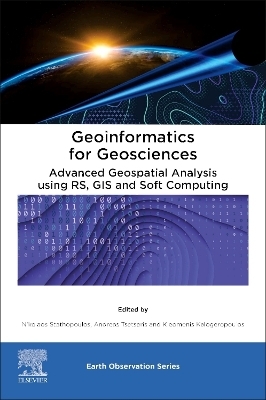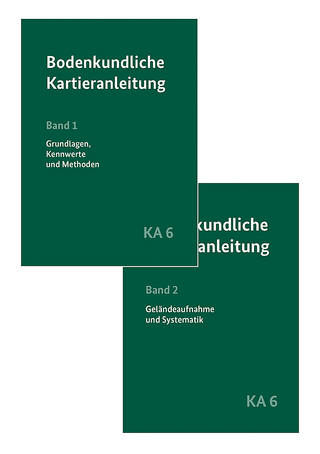
Geoinformatics for Geosciences
Elsevier - Health Sciences Division (Verlag)
978-0-323-98983-1 (ISBN)
Detailing up-to-date techniques in geoinformatics, this book offers in-depth, up-to-date methodologies for researchers and academics to understand how contemporary data can be combined with innovative techniques and tools in order to address challenges in the geosciences.
Dr. Nikolaos Stathopoulos is Scientific Project Manager at the Institute for Space Applications and Remote Sensing, National Observatory of Athens, BEYOND Centre of EO Research & Satellite Remote Sensing, Greece. He holds a PhD in Geoenvironmental Hazards & Water Resources via GIS & Remote Sensing from the National Technical University of Athens, MSc in Geoinformatics from Harokopio University of Athens, MSc in Water Resources from the National Technical University of Athens, and Bachelor in Mining Engineering specializing in Geotechnology. He has published over 35 scientific publications including journal papers, conference papers, and book chapters covering fields such as remote sensing, geographic information systems, hazards (e.g. floods, erosion, desertification, etc.), spatial analysis, geostatistics, and more. He has over 10 years of research, teaching and professional experience in the field of remote sensing and his main research interests are geoenvironmental hazards, climate change, hydrology and groundwater, modeling, quality and quantity of water resources, change detection, remote sensing, and GIS. Professor Andreas Tsatsaris is a Rural and Surveying Engineer and President of the Department of Surveying and Geoinformatics Engineering of the University of West Attica (UniWA), Greece. He is also Director of the Research Laboratory "GAEA". He has been teaching since 1996 in Spatial Epidemiology, Medical Geography, GIS, and Thematic Cartography in both Postgraduate and Undergraduate Studies Programs of the Faculty of Medicine at the University of Crete and Aristotle University of Thessaloniki, and the Faculty of Engineering at UniWA. He has published over 90 articles in scientific journals and international conferences and has participated in over 30 national and international research programs. He is a certified evaluator of the State Scholarship Foundation and General Secretariat in Research and Technology in the evaluation of research proposals. Dr. Kleomenis Kalogeropoulos is a Survey Engineer (Ph.D., MSc, and BSc), and an adjunct lecturer at the Department of Surveying and Geoinformatics Engineering, University of West Attica, Greece. His research interests are focused on GIS, SDI, spatial analysis, spatial epidemiology, natural disaster modeling, geoarchaeology, digital cartography, and geography. He is also a lecturer at the Greek National Centre for Public Administration & Local Government, a certified evaluator of the Greek General Secretariat in Research and Technology and an Expert in Earth Sciences in the use of GIS and Remote Sensing applications for the Institute of Educational Policy, of the Greek Ministry of Education. He boasts a publication record of over 100 articles in scientific journals and international conferences, which have garnered numerous references. His involvement extends to over 15 national and international research programs. Additionally, he serves as a reviewer for more than 25 esteemed scientific journals.
1. Geoinformatics, spatial epidemiology, and public health
2. Quality of life in Athens, Greece, using geonformatics
3. A new kind of GeoInformatics built on living structure and on the organic view of space
4. Geospatial modeling of invasive Aedes vectors in Europe and the diseases they transmit: a review of best practices
5. Deposition and erosion dynamics in Axios and Aliakmonas river deltas (Greece) with the use of Google Earth Engine and geospatial analysis tools
6. Crowdsourced geospatial data in human and Earth observations: opportunities and challenges
7. Google Earth Engine and machine learning classifiers for obtaining burnt area cartography: a case study from a Mediterranean setting
8. On volunteered geographic information quality: a framework for sharing data quality information
9. Natural disaster monitoring using ICEYE SAR data
10. Oil spill detection using optical remote sensing images and machine learning approaches (case study: Persian Gulf)
11. Remote sensing and geospatial analysis
12. Mineral exploration using multispectral and hyperspectral remote sensing data
13. Geographic information systems and remote sensing for local development. Reservoirs positioning
14. An integrated approach for a flood impact assessment on land uses/cover based on synthetic aperture radar images and spatial analytics. The case of an extreme event in Sperchios River Basin, Greece
15. Quantitative comparison of geostatistical analysis of interpolation techniques and semiveriogram spatial dependency parameters for soil atrazine contamination attribute
16. Comparison of “subjectivity and “objectivity in expert-based landslide susceptibility modeling
17. Remote sensing and geographic information system for soil analysis—vulnerability mapping and assessment
18. Multiparameter analysis of the flood of November 15, 2017 in west Attica using satellite remote sensing
Conclusions
Index
| Erscheinungsdatum | 10.07.2023 |
|---|---|
| Reihe/Serie | Earth Observation |
| Verlagsort | Philadelphia |
| Sprache | englisch |
| Maße | 152 x 229 mm |
| Gewicht | 1000 g |
| Themenwelt | Mathematik / Informatik ► Informatik |
| Naturwissenschaften ► Geowissenschaften ► Geografie / Kartografie | |
| Naturwissenschaften ► Geowissenschaften ► Geologie | |
| ISBN-10 | 0-323-98983-7 / 0323989837 |
| ISBN-13 | 978-0-323-98983-1 / 9780323989831 |
| Zustand | Neuware |
| Haben Sie eine Frage zum Produkt? |
aus dem Bereich


